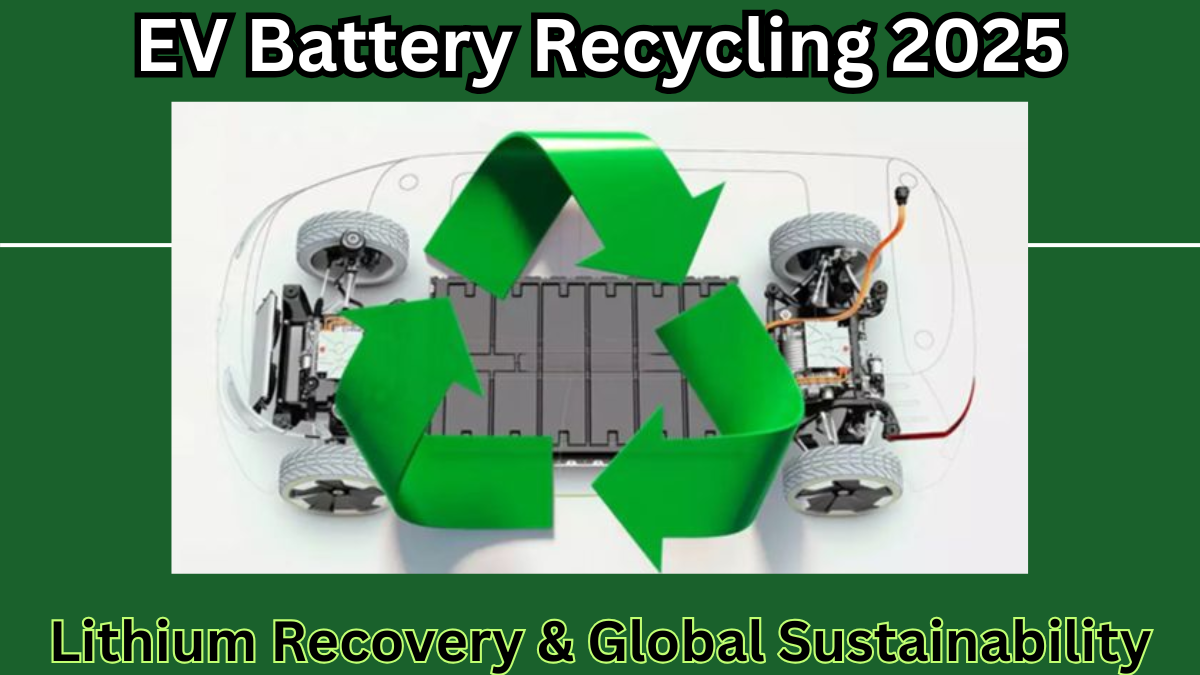As electric vehicles (EVs) continue to dominate the roads, a new challenge emerges—what happens to the batteries after their life on the road ends? In Global EV Battery Recycling 2025, the focus has shifted from just manufacturing clean vehicles to ensuring that the heart of EVs—the batteries—are recycled, reused, and repurposed responsibly.
Let’s dive into how lithium recovery and global sustainability efforts are shaping the future of EV battery reuse.

Why EV Battery Recycling Matters
With millions of EVs expected on the roads by 2025, the sheer volume of spent batteries could pose an environmental risk if not managed wisely. Recycling plays a crucial role in:
-
Reducing environmental waste
-
Recovering valuable materials like lithium, cobalt, and nickel
-
Supporting the circular economy
-
Minimizing the carbon footprint of EV production
The Global Push for EV Battery Recycling in 2025
Key Highlights of Global EV Battery Recycling 2025
| Region | Major Initiative | Goal |
|---|---|---|
| Europe | EU Battery Directive update | 70% recycling efficiency |
| USA | Department of Energy funding | Boost domestic lithium recovery |
| China | Mandatory battery take-back policies | Maximize material reuse |
| India | Draft EV battery recycling rules | Establish formal recycling networks |
Governments, manufacturers, and environmental agencies worldwide are aligning their policies to promote sustainability, focusing on lithium recovery as a top priority.
How Lithium Recovery Powers Sustainability
Lithium is one of the most valuable elements in EV batteries. Here’s why its recovery matters:
-
Reduces the need for new mining operations, which often harm ecosystems
-
Supports the reuse of critical materials in new batteries
-
Lowers production costs for EV manufacturers
-
Strengthens supply chain resilience
By 2025, Global EV Battery Recycling 2025 efforts are expected to significantly cut down reliance on virgin lithium sources, paving the way for a cleaner, greener future.
The Technologies Driving EV Battery Recycling
Several advanced methods are being adopted for battery recycling:
-
Hydrometallurgical processes – Use chemical solutions to extract lithium and other metals
-
Pyrometallurgical processes – Involve high-temperature smelting to separate valuable materials
-
Direct recycling techniques – Aim to recover and reuse battery components without breaking them down fully
These innovations are helping close the loop in the sustainability cycle.
Challenges on the Road to 2025
While the progress is impressive, challenges persist:
-
Logistics of collecting used batteries globally
-
Economic viability of recycling processes
-
Standardization of battery design for easier disassembly
-
Ensuring safe handling of hazardous components
Still, Global EV Battery Recycling 2025 initiatives are addressing these hurdles with strong investments and collaboration across industries.
Future Outlook: A Circular Economy for EVs
The ultimate vision? A future where EV batteries are part of a circular economy, where:
-
Old batteries become resources for new ones
-
Lithium and other elements are continuously reused
-
EVs truly embody the promise of sustainability
FAQs
What is the main focus of Global EV Battery Recycling 2025?
The main focus is to recover valuable materials like lithium, enhance sustainability, and ensure safe, efficient battery reuse worldwide.
How does lithium recovery contribute to sustainability?
Lithium recovery reduces the need for mining, conserves natural resources, lowers manufacturing costs, and supports environmental goals by keeping materials in use longer.
What role do governments play in EV battery recycling?
Governments provide funding, set regulations, and encourage collaboration between private and public sectors to promote responsible recycling and reuse of EV batteries.
Are recycled EV batteries as efficient as new ones?
Recycled materials, especially when processed using advanced techniques, can match the performance standards of new materials, supporting the sustainability and cost-effectiveness of new EV batteries.
Click here to learn more
